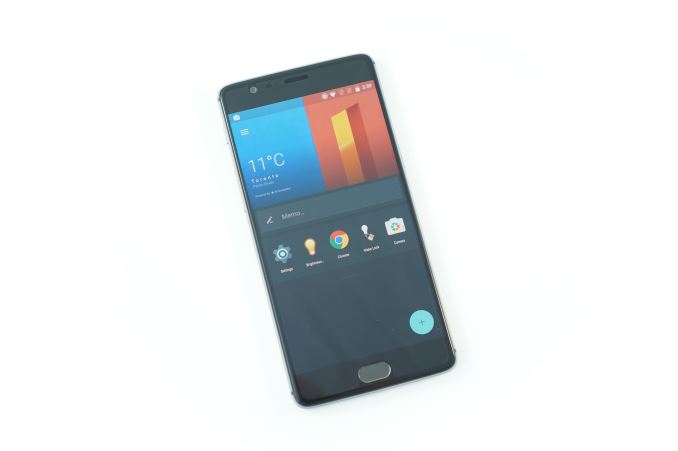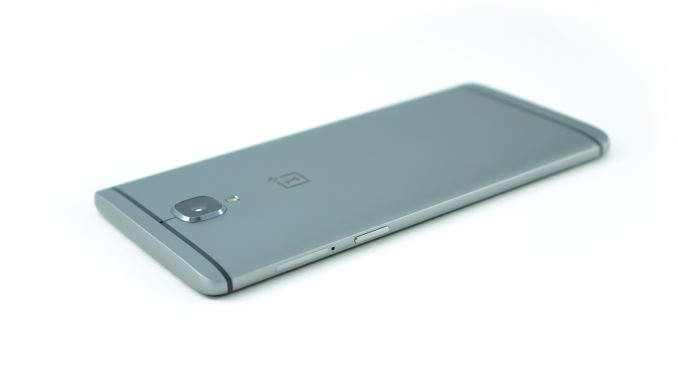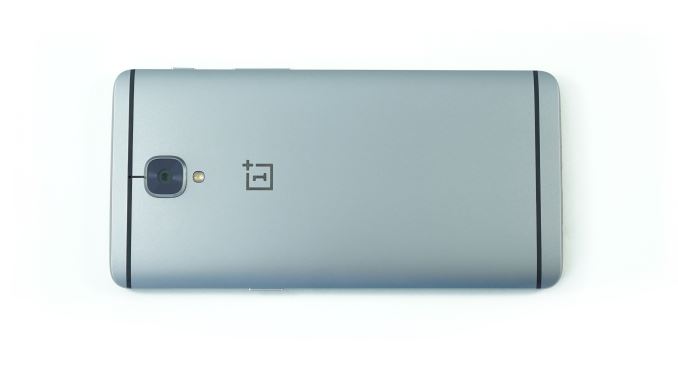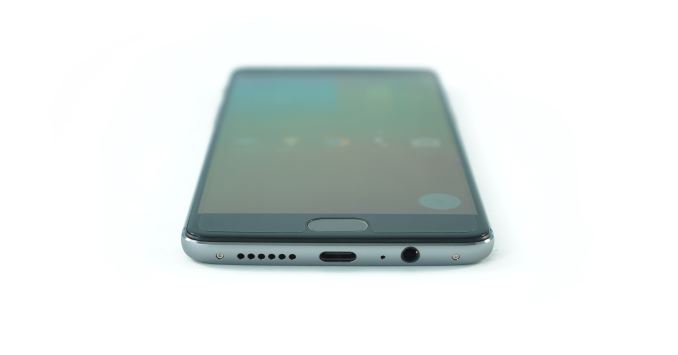The OnePlus 3 Review
by Brandon Chester on June 20, 2016 8:00 AM EST- Posted in
- Smartphones
- OnePlus
- OnePlus 3

In 2014 OnePlus was a company that was basically unheard of. Despite that, there was great anticipation in the Android enthusiast community about a new smartphone coming from this new company. Their first smartphone ended up being called the OnePlus One, and it was arguably the first device in a trend of smartphones that tried to bring flagship specifications to devices with prices much lower than what the big players in the smartphone market demanded for their best smartphones. The OnePlus One certainly wasn't perfect, but it showed that it was possible to produce a high spec smartphone for hundreds of dollars less than Android flagships, and what OnePlus needed to improve on was their execution.
A year came and went, and OnePlus came out with the OnePlus 2. This was during a time where the Android market was still struggling to deal with the issues posed by Qualcomm's Snapdragon 808 and 810 SoCs, which put Android performance improvements at something of a standstill. In the case of the OnePlus 2, I discovered that OnePlus had put mechanisms in place that reduced web performance even further, and as I reviewed the OnePlus 2 I discovered concerning regressions in other aspects like the phone's display, and its battery life.
Moving into 2016, we now have the OnePlus 3. At this point OnePlus now has a better variety of hardware to choose from, and they should know exactly what to fix from the OnePlus 2 to make a great smartphone. However, the smartphone market gets more competitive with each year that passes, and it's no longer enough to simply put good specs in a device and fail with the execution. Finding out how well OnePlus executed with the user experience is what I'm here to tell you, but before getting in to that, it's important to see how the OnePlus 3 compares to its predecessor.
| OnePlus 2 | OnePlus 3 | |
| SoC | Qualcomm Snapdragon 810 | Qualcomm Snapdragon 820 |
| GPU | Adreno 430 | Adreno 530 |
| RAM | 2/4GB LPDDR4 | 6GB LPDDR4 |
| Display | 5.5" 1920 x 1080 IPS LCD | 5.5" 1920 x 1080 PenTile AMOLED |
| Size / Mass | 151.8 x 74.9 x 9.85mm, 175g | 152.7 x 74.7 x 7.35mm, 158g |
| Battery | 3300 mAh | 3000 mAh |
| Rear Camera | 13MP 1.3 μm OmniVision OV13860 f/2.0 | 16MP 1.1 μm Sony IMX298, f/2.0, OIS |
| Front Camera | 5MP 1.4 μm OmniVision OV5648, f/2.0 | 8MP 1.4 μm Sony IMX179, f/2.0 |
| Storage | 16/64GB eMMC | 64GB UFS 2.0 |
| I/O | USB 2.0 Type-C connector, 3.5mm audio | |
| Connectivity | 802.11a/b/g/n/ac + BT 4.1 USB-C, GPS/GNSS |
802.11a/b/g/n/ac + BT 4.2, USB-C NFC, GPS/GNSS |
| Price | $329 (3GB/16GB) $389 (4GB/64GB) |
$399 (6GB/64GB) |
At least at a high level, the OnePlus 3 shows a great deal of promise. The move from Snapdragon 810 to 820 will certainly improve performance, especially when you consider the app detection that OnePlus was doing which crippled web performance on the OnePlus 2. There's also a whopping 6GB of RAM. I do wonder if 6GB is overkill only because the number of apps that people actually use on a daily basis may be smaller than the number that 6GB can actually keep resident in memory. It's also worth noting that there is an energy cost to adding more RAM as each memory cell has to be periodically refreshed to maintain data integrity.
OnePlus has moved to an AMOLED display with the OnePlus 3. While it was once the case that AMOLED displays that weren't on Samsung devices exhibited low brightness and poor calibration, recent AMOLED devices have reversed that trend entirely. However, moving from a 1080p RGB LCD to a 1080p PenTile AMOLED does come with a reduction in effective resolution, and I'll talk about that more in the display section.
With the cameras, OnePlus has gone back to Sony sensors. The front-facing camera moves to 8MP, and the rear-facing goes to 16MP. Lenses stay at f/2.0 which I think is a smart move given some of the problems we've seen regarding sharpness and distortion on phones that have moved to even wider apertures. There's more to the camera story than what you see on paper, and I'll be covering that as well.
As for other changes, there's now only one version of the phone which is 6GB of RAM and 64GB of UFS 2.0 storage for $399. I almost never saw the 16GB OnePlus 2 for sale anyway, so this isn't really some sort of pricing upset. As for connectivity, you still have a USB 2.0 based Type-C connector and 802.11ac WiFi, but NFC has made a return which means the OnePlus 3 will be usable with Android Pay and other applications that make use of NFC.
Design
One of the big changes OnePlus has made with the OnePlus 3 is the industrial design. Nothing about the OnePlus One's design was really exceptional, but given that it was bringing many flagship specs to a phone that costed several hundred dollars less than flagship phones of the time it was entirely understandable. With the OnePlus 2 the average price of OnePlus's flagship phone went up, but OnePlus had made some changes to the external design. The phone gained a metal frame but retained its sandstone back cover. To be honest, I wasn't really a fan of the OnePlus 2's design. The metal frame didn't do much to improve how high quality the phone felt, and the back cover wasn't coarse enough to really have an impact on how grippy the chassis was. On top of that, the fact that the display layer of the phone had a plastic border that sat above the metal frame looked kind of cheap, and the increased thickness and mass actually represented regressions from the OnePlus One in some respects.
With the OnePlus 3, OnePlus has moved to an aluminum unibody design. In doing so they've addressed pretty much all of my issues with the OnePlus 2. Starting with the back of the device, you no longer have the sandstone finish. I'm sure many people will disagree, but the OnePlus 2 back cover didn't help me with gripping the phone at all. The OnePlus 3 feels like a much higher quality device, particularly because there are no longer three distinct sections of the phone that all have seams and gaps between one another. The unibody design means the back cover is no longer removable, but as I said in my OnePlus 2 review I think the removable back cover on OnePlus devices was a complete waste anyway because it only served as a way to access the SIM slots, which could have been implemented as a tray on the side of the device. With the OnePlus 3 they've done exactly that, and so the removable back cover isn't needed.
The back cover sees some additional changes, with some being independent of the move to an aluminum chassis. There are now lines for the antennas on the top and bottom of the phone, and the top line connects to the square-shaped camera sitting beneath it, which reminds me of the HTC One M9. On the topic of the camera, there's no longer a separate island that the camera and flash sit upon, which I think is a big improvement on what I felt was one of the least appealing visual aspects of the previous OnePlus devices. The camera does stick out significantly more than it did on the OnePlus 2 which is just a consequence of the significant reduction in thickness, and OnePlus has actually decreased sensor size with this generation so the hump likely would have been even larger if they hadn't. The only other thing to note about the camera area is that there's now just a single LED flash and the camera uses PDAF, while the OnePlus 2 had a dual LED module and an IR module for the laser autofocus.
On the left side of the phone you have the volume rocker and the mute switch, while the right side has the sleep/wake button and the NanoSIM slots. I appreciate that OnePlus has kept their volume rocker on the left side of the phone, and I think the three stage mute switch is an underappreciated feature that more manufacturers should adopt. You can see above that the phone's edges only curve to a point, at which point you have a chamfered edge that meets the display glass. I like the appearance that this provides, but it does mean that you don't have the same smooth feeling when swiping near the edges of the display that you get on a device like the iPhone 6s Plus.
The bottom of the phone is changed from the OnePlus 2. There are no longer any antenna lines since they wrap around the left and right sides of the phone, and there aren't holes drilled on both sides of the USB Type-C port which has allowed the 3.5mm audio jack to be brought to the bottom of the phone. One thing that bothers me is how the 3.5mm jack isn't centered like the rest of the ports and screws, which kind of ruins the visual uniformity. You can also see OnePlus's pre-applied screen protector in the image above. It doesn't quite cover the entire display from edge to edge, and I noticed that a great deal of dust was collecting around the edges so I ended up removing it. It's just your typical plastic screen protector rather than a glass one anyway, although the fact that OnePlus throws it in for free is a nice gesture.
The front of the phone is similar to the OnePlus 2, but it's clear how the overall shape of the phone has changed to become more curved, while the OnePlus 2 was similar to the Nexus 5 in how it had flat sides meeting curved ones at hard angles. I have to say that I prefer the appearance of the OnePlus 3 in this regard, but it may be seen as less unique than the OnePlus 2. As for what's on the front cover, you have the earpiece and front-facing camera on the top, with three capacitive keys on the bottom. The middle key is the home button, which also acts as a fingerprint scanner in the same manner as the OnePlus 2's home key. In my experience the sensor has been quite accurate and just as quick as anything else on the market, and having it on the front of the device provides a better experience than rear-mounted scanners.
OxygenOS provides many ways to customize the phone, so you also have the option to switch the order of the back and recent apps buttons, and if you want software keys OnePlus provides that as an option as well. I covered the major points of OxygenOS in my OnePlus 2 review, and I haven't seen any major changes to it so I'll just refer to that rather than going over the features a second time. The one thing that has changed is that the UI no longer feels unbearably slow and sluggish, and in the next section you'll see exactly why that is.













176 Comments
View All Comments
UtilityMax - Wednesday, June 22, 2016 - link
Sadly, in the world of Android the competition has forced the companies to start hyping the features nobody asked for, such as QHD screens, octa-core processors, and now I guess RAM (6GB of it, no less). At the same time, the Android vendors often fail to deliver features people really wanted, such as better battery life, quality screens (as in good brightness and black levels, at least), sd card slots, unlocked wireless bands, and single-core performance that could match at least the three year old Snapdragon 800/801 at an affordable price.fanofanand - Monday, June 20, 2016 - link
I seem to recall them highly lauding the Moto-G, and even the Moto-E. Your complaints are largely invalid, as they do take price into account. They are technical reviewers, if they started every sentence with a caveat about price it would be unbearable reading. "Xiaomi showed us with the Redmi note 3 pro that a 4000 battery is possible with a $200 or less phone".Then go buy the Xiaomi. If you think that phone is the bee's knees then vote with your wallet. If a massive battery is the sole important factor in your phone purchasing then your search is over! For the rest of us, it's nice to see the technical analysis and decide for ourselves what amount of compromise is worth the cost savings.
FWIW I am on my 2nd Nexus 5 because no company has made anything since that is a better value. I get the value proposition, I do.
thek - Monday, June 20, 2016 - link
You obviously didn't understand the argument, sir.The point was that if even a low end cheap Chinese phone can have better batteries, than huge companies can include them too. But they don't. So why is that?
fanofanand - Monday, June 20, 2016 - link
Maybe because there are no employee protections in China? Maybe because there are no real consumer protections in China? The cost of doing business as a Chinese company is a fraction of the cost of doing business in the EU or the US. There is a reason most Chinese products don't get sold in either of those two markets, and it isn't just patent/copyright laws. You might as well ask yourself why you can buy 10 Chinese t-shirts for the same price of one US made t-shirt. BOM is not static between nations.thek - Monday, June 20, 2016 - link
You do realize that the IPhone is made in China right?..You missed it again: the correct answer was that those companies are being cheap on us consumers, even on their premium priced flagships because they want to keep making billions of dollars of revenue per quarter (not even talking yearly!!).
they can provide 64GB as base storage and 4000+ batteries as minimum. They just don't want to.
melgross - Monday, June 20, 2016 - link
Ah, you're missing the point. Quality manufacturers all pay about the same thing for the same things. A screen may be made by one manufacturer, but their customers may spec a lower, or higher quality for brightness, speed, color quality, contrast, power draw, and other matters.The same thing is true for everything else. There are higher quality batteries, and lower quality batteries. The better ones may last for 1,000 recharges, and the cheaper ones may just last 500. Storage is, again, the same. Apple obviously uses higher quality NAND, hence the much higher speeds. It's been said elsewhere too. When making cheaper phones, compromises must be made. Not spending the money to calibrate a screen is a factor that we see here. Even if they come out with an sRGB update, without calibrating each screen, it will still look pretty bad. Cheaper components and fewer features are the way to go. How a manufacturer balances that all out is the differentiating factor.
kurahk7 - Monday, June 20, 2016 - link
Here are a few reasons why the display is the single most important part of a smartphone-1. You stare at it all day long.
2. The image that you see while taking a photo is expected to be the same as when you print it out or share to a friend.
3. You will be able to enjoy content the original creator intended.
echoe - Monday, June 20, 2016 - link
I mean, if a phone didn't have a working display it would not be usable. The screen needs to be good. They mention the caveats to this judgment in the review, but obviously it's pretty bad ...UtilityMax - Wednesday, June 22, 2016 - link
Why do you think that 400USD is not enough money for the vendor to deliver a quality screen? In fact, the vendors have gotten quite lazy recently. The 600+ USD prices were artificially inflated to herd the consumers into signing the multi-year cellular plans so they got big discounts on hardware. Now that the heavy discounting of the locked carrier-branded smartphones by the carriers is nearly gone, I don't know what's going to keep justifying the 500-600USD prices on the flagship phones when a phone like Nexus 5X offers 90% of functionality, at 40 percent discount. The Nexus 5X normally sold for well under 400USD. It had a great display and great camera, and was basically a good all-around phone. Yes, the SoC was slower than that in OP3, but that issue affected most phones of the 5X generation.The_Assimilator - Monday, June 20, 2016 - link
Hey look it's... not a GTX 1080 review.